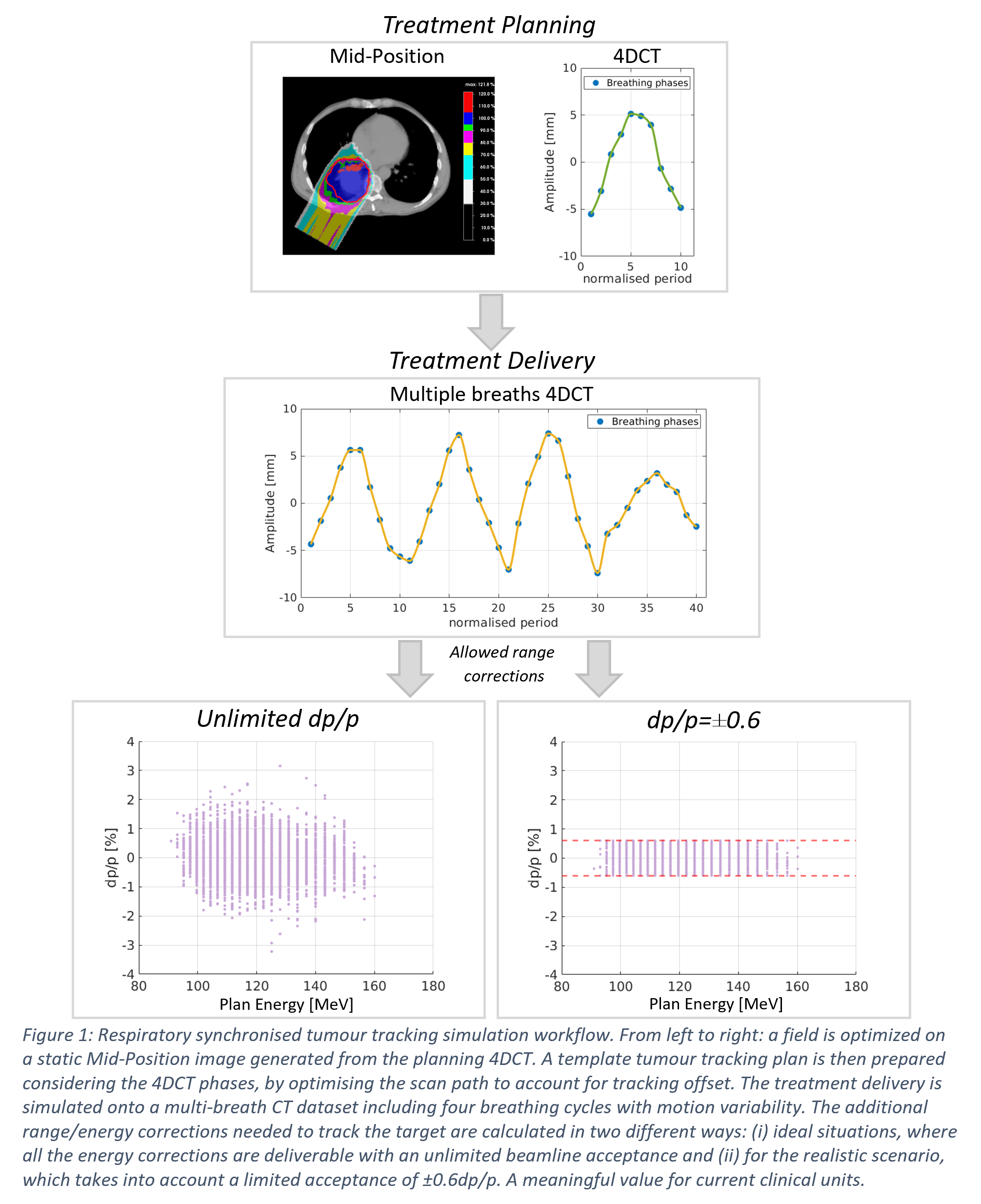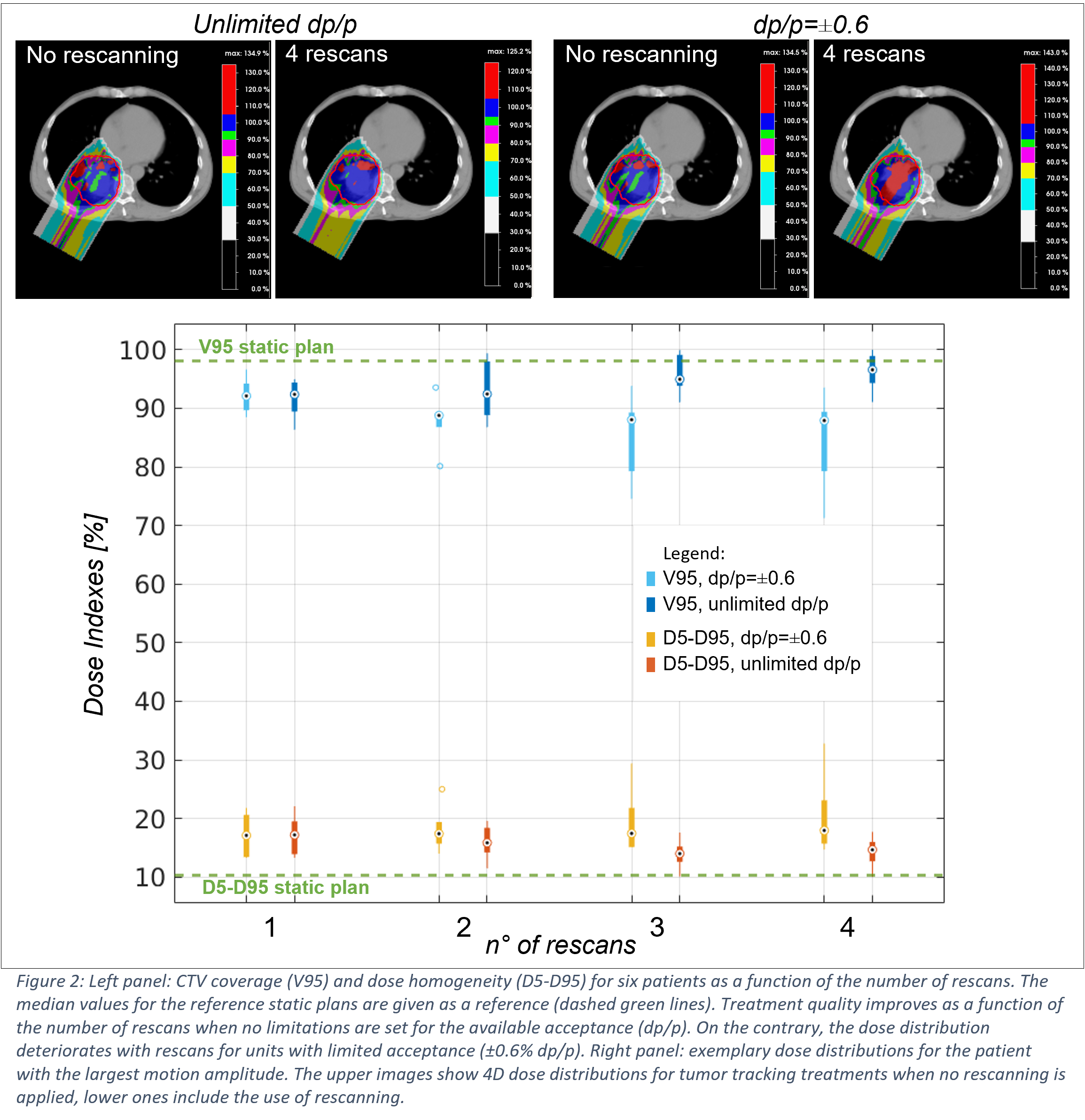Tracking irregular breathing with pencil beam proton therapy
Anna Chiara Giovannelli,
Switzerland
PO-1862
Abstract
Tracking irregular breathing with pencil beam proton therapy
Authors: Anna Chiara Giovannelli1,2, Sairos Safai1, David Meer1, Damien Charles Weber1,3,4, Antony John Lomax1,5, Giovanni Fattori1
1Paul Scherrer Institut, Center for Proton Therapy, Villigen, Switzerland; 2ETH Zürich, Department of Physics, Zürich, Switzerland; 3University Hospital of Zürich, Radiation Oncology Department, Zürich, Switzerland; 4Inselspital, Bern University Hospital, University of Bern, Radiation Oncology Department, Bern, Switzerland; 5ETH Zürich, Department of Physics, Zürich, Switzerland
Show Affiliations
Hide Affiliations
Purpose or Objective
Respiratory synchronized tracking has recently been introduced as an option to track tumor motion with proton beams. The effectiveness of this technique, which includes the preparation of a template tracking plan based on the motion extracted from the planning 4DCT, is however challenged by the intra- and inter-fraction respiratory variations. Our aim is therefore to test the limits of this approach with respect to irregular breathing patterns. We do so by taking into account the current capabilities of proton units and exploring their potential in the perspective of next-generation solutions, which may allow for larger momentum acceptance.
Material and Methods
Tumor tracking was simulated for the treatment of 6 NSCLC patients selected from a database including 5xrepeated 4DCT imaging. Single-field plans were optimized on the mid-position image of the first 4DCT and the individual phases used for template planning, which includes the pre-computation of pencil beam lateral offsets for tracking and resorting by descending energy, which are then delivered in synchrony with the patient’s breathing. The remaining four 4DCT sets were combined via deformable image registration into a multi-breath imaging dataset for simulating treatments including breathing variability. Incremental tracking offsets required to compensate for motion variability were calculated and 4D dose calculations performed to assess CTV coverage (V95) and dose homogeneity (D5-D95) assuming conventional (±0.6% dp/p) and unconstrained momentum acceptance of the gantry beam line.

Results
For the static plans, median V95/D5-D95 to the CTV over all cases were 98% and 10.3% respectively. Median(max) motion amplitudes extracted from all 4DCTs for all patients ranged from a minimum of 0.4mm(75%) up to 11.1mm(49%), resulting in energy changes for 3D tracking requiring a beamline acceptance of up to ±3% dp/p. In this scenario, 3D tracking achieved V95/D5-D95 values close to the static: 92.4% and 17.2%. For the conventional acceptance, which limits range tracking, the same indices decreased marginally to 92.1% and 17.1%. Rescanning was found to have a positive effect on treatment quality for the ideal cases (V95= 96.6%, D5-D95=14.6%), but negatively impacted results for limited acceptance (V95= 87.9%, D5-D95=18%), with rescanning increasing the acceptance requirements up to ±7% dp/p.

Conclusion
Respiratory synchronized tracking was simulated under realistic conditions of breathing variability. The ideal acceptance requirements for the treatment of lung cancer are not far from what is available in the clinic today, and current proton therapy units would technically already allow the delivery of treatments with tumor tracking. Nevertheless, alternative options such as visual coaching or robust planning should be considered, as rescanning could be challenging with this approach.
References:
Giovannelli AC, et al. . Med Phys., https://doi.org/10.1002/mp.15449
Fattori G, et al. Sci Rep., https://doi.org/10.1038/s41598-020-71821-1